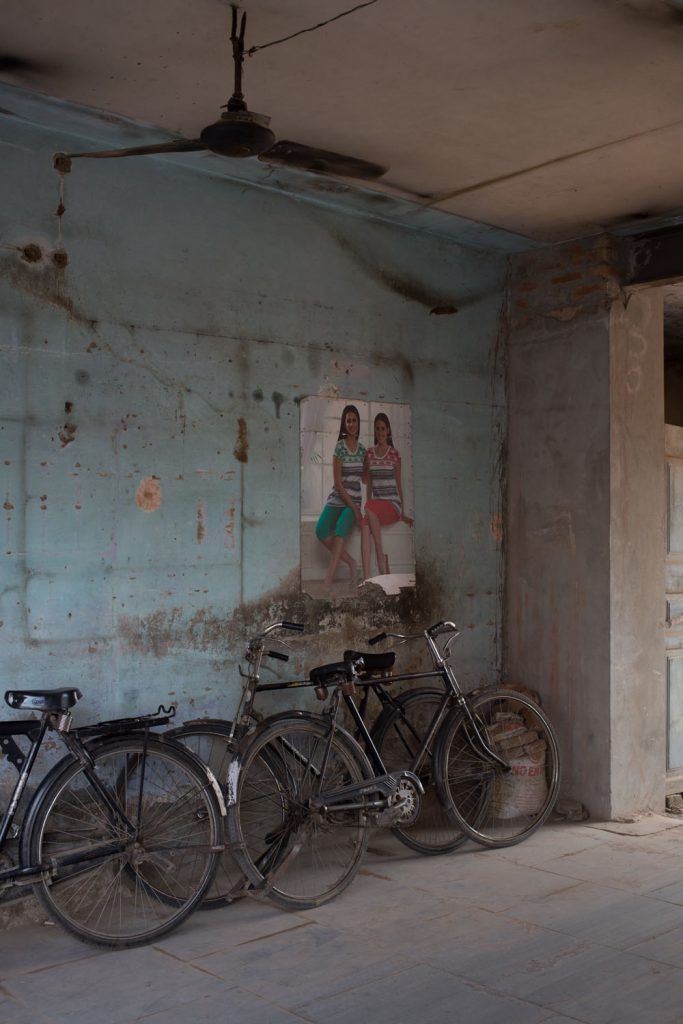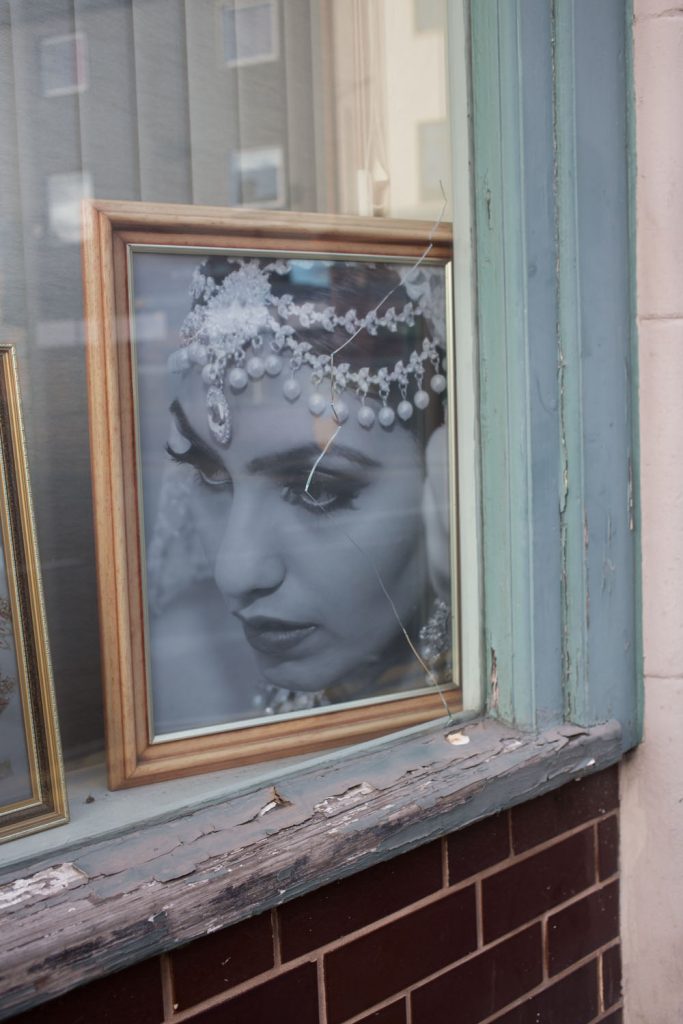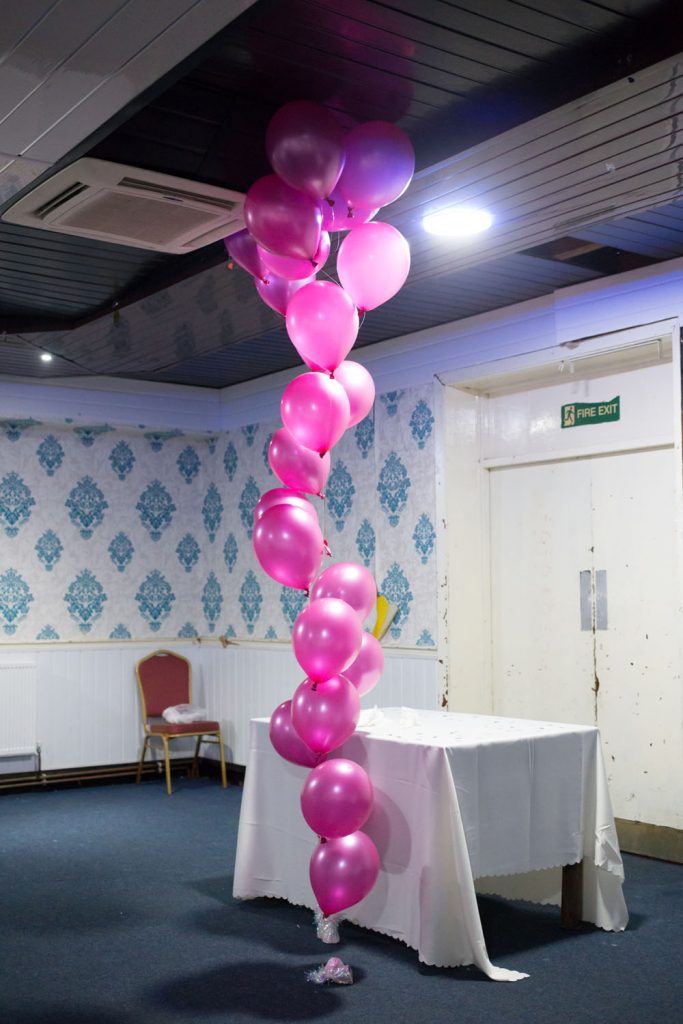Girl Gaze Andrea Fernandes
Photographic artist Andrea Fernandes is drawn to the personal heroism of others and their attempts to articulate life through performance.
For Girl Gaze Fernandes offers the viewer no documentary truth about the lives of the women she met in the Black Country and the Punjab in her collection, ਜਿੰਨਾ ਹਸਨਾ ਉਨਾ ਹੈਰੋ ਰੋਨਾ (Jinna Hasna Ohna Hi Rona / You Laugh As Much As You Cry). Instead, she leaves it open to the viewer to determine their own path through the myriad of photographic impressions and conversations, which she screens in an immersive three-dimensional projection.
How did you begin to think about tackling the Reimagine commission?
I hadn’t been to either Panjab or Black Country before so I began by asking about it. Most people, and the internet search engines, narrowed it down to the same repetitive categories: partition, migration, marriage, safety and independence. Once I was there I started talking to the women about these subjects that seemed to surround them and expectedly these simplistic terms became very plural.
Can you tell me about your process and do you have any rules that you follow?
I enjoy chance. I often just go wherever the work takes me. By the end of any work, neither I nor the work is the same as when we began.
You visited the Black Country – did you have any preconceptions about what you might find and how did that compare to the actual trip?
I’ve lived in London for a couple of years so I was very pleasantly surprised with the pace of the Black Country. I enjoyed the chats on the buses people had with strangers across seats. One morning, on a long bus ride, probably the 79, two women, in their seventies were talking about how they used to be afraid of death when they were young. One told the other how she subscribes to a lot of free mail so when she dies her neighbours will know immediately to check on her when the mail starts to pile up. These are the kind of conversations that influenced the route the work would go on. I was drawn to people’s ability to change reality by the way they perceived it. And how perception changes over time is always related to it. It was comforting to see how things we dread at one point in our life can become almost banal at another point.
What was it that most appealed to you about this particular project?
Independence. And time. In most commissioned work with shorter timelines, you tend to be a bit more formulaic. The openness in the brief for this project freed me to unconditionally explore my vision and follow my instincts. And the deadlines ensured I stayed focused.
Do you have a favourite photograph that you’ve produced for this project and if so and why?
I had a photograph of two best friends but I don’t have permission to use it for the project. The person who introduced us was concerned about whether the project was accurately representing Panjabi women. There’s a common worry of ‘what will people say or think?’ and while this worry is rarely unfounded there is a need to question it. Communities are defined through (unspoken) rules but these rules often outlive their original reason.
I am sure that you met lots of inspirational women – was there anyone whose stories stand out that you can share?
I met a lot of regular women and what inspired me the most was that snippets from our encounters gradually began to change my perspective. For instance, I noticed a pedantic reclamation of Panjab over Punjab used by the women in the Black Country. It was only after spending time with the idea did I understand the relevance of it. I realised that the pronunciation was changing the meaning of the name. This work is filled with details like these and small moments of casual profundity.
What was the most interesting, surprising or exciting thing you found out about your time in the Black Country?
I found Wolverhampton quite charming to walk around at night as opposed to what the headlines or people’s advice may have led me to believe.
How would you describe your photographic style?
Layered – I like to play with language. And repetition. I fill my work with observations that offer the viewer plenty of signs to interpret and routes to take so they can make the work their own.
When did you first discover your creative talents?
I have never been satisfied with reality as a simple fact so I’ve created imaginary friends and worlds and stories for as long as I can remember.
Is the artistic life lonely? What do you do to counteract it?
It has to be lonely sometimes. Making art does not have to be a solitary process but it has to be a reflective one. Life can be very distracting and fast and I enjoy that – it inspires my work. But in order to use that in my work, I have to take the time out, be alone and think deeply and reflect on its meanings and then find a way to manifest those thoughts.
Andrea Fernandes has a Master’s Degree in Photographic Studies from the University of Westminster and is the co-founder of BIND, an experimental platform involved in developing original practices and using inventive forms of engagement with the medium.
GIRL GAZE: JOURNEYS THROUGH THE PUNJAB & THE BLACK COUNTRY, UK is a new photography project which launches this March in Chandigarh. About women, by women, the project explores the unique connection between women from the Punjab and the Black Country (Wolverhampton, Walsall and Sandwell).
The project, curated by Iona Ferguson, brings together newly-commissioned work by: Jocelyn Allen (UK), Jennifer Pattison (UK), Andrea Fernandes (India) and Uzma Mohsin (India) and is a collaboration with Creative Black Country, Multistory, Delhi Photo Festival and the Nazar Foundation. The project is funded by The British Council and Arts Council England.
EVENT DETAILS
Punjab Lalit Kala Akademi, Chandigarh, India, 10-18th March.
Apeejay College of Fine Arts, Jalandhar, 23rd-27th March.





